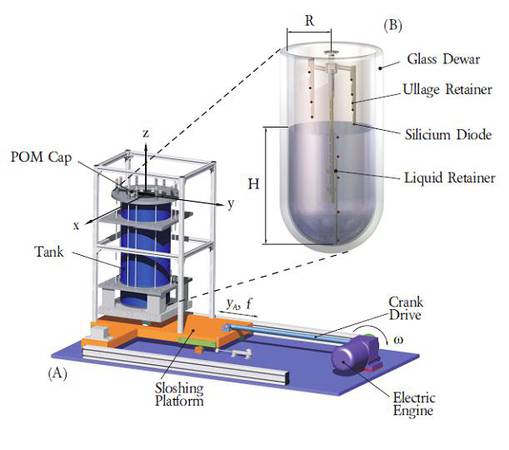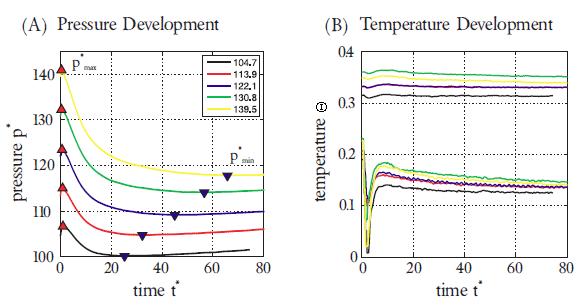pressure drop
Liquid sloshing represents an undesired effect concerning most applications for propellant storage in space transportation vehicles. According to gravity dominated free surface flows in propellant vessels even small vibrations can cause enormous liquid motion inside rocket tanks. The understanding of sloshing is of particular importance, since cryogenic propellant is utilized to power space vehicles, such as the planned ESC-B upper stage from Ariane 5 launcher. While the propellant is initially configured the liquid on the bottom and the stratified ullage above the free surface, this temperature stratication can be disturbed under the impact of sloshing. The moving propellant can reach a critical state, where the wave amplitude is sucient to disturb the thermodynamic equilibrium in the neighborhood of liquid/vapor interface. Typically, this leads to pressure drops in the hydrogen tank. Suddenly decreases of the tank pressure may be critical compromising the structural stability of the tank.

During sloshing, the pressure falls immediately.

Here the dimensionless pressure p* is defined as the pressure divided by a product of the density and a characteristic velocity and the dimensionless time is defined as a product of time and frequency. The different colored lines are different initial conditions for the pressure. When the initial pressure (e.g. 104,7 kPa) is reached, the drive is started to induce the forced lateral oscillation. The excitation provokes that the liquid inside the Dewar tank starts to slosh causing the characteristic pressure development, as plotted above. At first, the tank pressure increases slightly, before p* obviously decreases.
For further information see:
Arndt, T., Dreyer, M. E., Behruzi, P., Winter, M., van Foreest, A., "Cryogenic Sloshing Tests in a Pressurized Cylindrical Reservoir", AIAA 2009-4860, 45th AIAA/ASME/SAE/ASEE Joint Propulsion Conference and Exhibit, Denver, Colorado, 02.-05.08.2009.
The funding of the research project by the German Federal Ministry of Economics and Technology (BMWi) through the German Aerospace Center (DLR) under grant number 50 RL 0741 is gratefully acknowledged.


 "
"